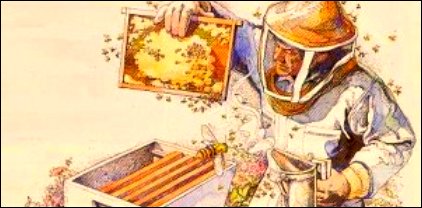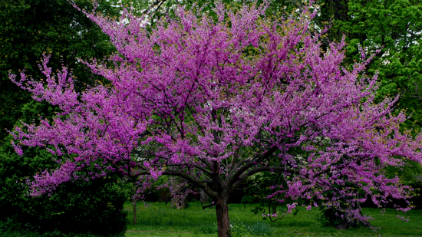
bringing nature, nurseries and gardeners together March 28, 2019
|
|
Nursery notes: many of the nurseries have their hands full with customers during weekends, so classes are on hold. However there are lots of fun events happening in the area.
Succulent Native: official opening party, Saturday (March 30), noon to 6 p.m. 5501 North Lamar. Free drinks, snacks, and a free plant with every purchase. Succulent Native ❦

Beekeeping basics: Learn all about the art and craft of bee-keeping from Erika Thompson (Texas Beeworks) this Sunday (March 31) 2 - 4 p.m. at Articulture: 6405 Manchaca Road.
Trowel & Error: join this august gathering of gardeners on Saturday, April 6. 9:30 - 1 p.m.. Mayfield Park (3505 W. 35th Street). Free. Trowel & Error. ❦
TreeFolks event: April 6, 10 - noon A tree-ID walk through Karst Preserve at Western Oaks in Southwest Austin (78749). 'Bring lots of water and dress for an outdoor adventure as we explore cave mouths and see several notable, hard-to-find species.' TreeFolks ❦
Spring Native Plant Sale: April 13. 9 - 5 p.m. Shop for hundreds of species of native Texas plants at this amazing event. Wildflower Center ❦

Tim Miller news: To celebrate his 30th year as a certified organic grower, Tim will host a free workshop on heirloom alliums at Millberg Farm: March 30, 10 a.m. to noon. (Alium is a huge genus which includes hundreds of species - onions, garlic, scallions, shallots, leeks and chives to name a few.)
737 Opal Lane, Kyle, 78640. Wear walking shoes and hat. Congratulations Tim. Millberg Farm ❦
W.S. Merwin (1927- 2019) Although best known for his poetry, this Pulitzer prize winner - who passed away this month - was also an avid gardener, and created a paradisiacal garden on Maui. Gardenista ❦

Central Texas Gardener: visit the water-thrifty gardens of Shirley and Neal Fox in San Antonio. In the studio Tom chats with Karen Guz (San Antonio Water System) about water conservation. Daphne explains how to fertilize lawns and house plants. Saturday at 4 p.m. Sunday 9 a.m. KLRU ❦
 Redbud: a Favorite for all Seasons
by Renee Studebaker
A redbud in March is a glorious thing. The sprays of pinkish purple blooms popping out of gray stems are an irresistible call to spring. But a leafy redbud is also nice. The big heart-shaped leaves create a soothing dark green mid-layer under the Pecan trees in my backyard from April to November.
Those big leaves also provide building materials for the busy leaf-cutter bees that pollinate my vegetables and flowers. The seedpods that mature throughout the summer and fall dangle from the branches and draw an assortment of songbirds, cardinals in particular.
In late autumn, the tree's fading leaves add a touch of yellow to my backyard palette. And in winter, the bare branches allow plenty of sunlight to pass through my windows.
And for all this, what do I give the redbud in return? Not much. A few inches of mulch now and then, and a little extra water during droughty spells. What a sweet deal. ❦
  Scarborough Fair Herb Gardens
by Chris Winslow
If you find yourself in the role of ‘family chef’ several even-ings a week, then why not emulate some of the great chefs of the world, and set up a little culinary herb garden that’s close to your kitchen door.
This is a surprisingly easy project to do, and fortunately for us central Texans, most of these culinary herbs thrive during the summer and winter months.
The list of these evergreen, winter-hardy herbs is extensive, and include the popular Scarborough Fair quartet of parsley, garden sage, rosemary and thyme, along with cilantro, lavender, winter savory, onion and garlic chives, and Italian and Greek oregano. ('Scarborough Fair' is a traditional English folk song made popular by Simon and Garfunkel in 1966.)
Pick a site close to your kitchen that gets lots of sunshine. It doesn’t need full sun all day, but aim for at least 5 to 6 hours.
One option would be to create a raised bed garden. A 4’ x 4’ square is large enough to grow at least 8 to 10 varieties.
Place taller plants, such as upright rosemary, towards the back, and plant the shorter ones, such as creeping rosemary or thyme, to the side and front.
If the garden is viewed from all sides, put the taller rosemary in the middle surrounded by shorter varieties.
Sometimes having a garden plot close to the house isn’t an option. An easy solution can be found in containers. Herbs can be mix-planted in larger pots, or they can be individually planted in pots and displayed in groups.
Put some herbs in tall pots, some in medium pots, and some in short pots. Displayed together, they will look beautiful. Success with container gardening depends entirely on the quality of the soil you put in the pot.
Peat moss mixed with sand, perlite, and vermiculite works best. With extra feeding with organic plant food, your herbs should grow with the minimum of effort. There are plenty of commercial mixes available at local nurseries that are designed for container growing.
Give growing herbs a try. It’s easier than you think and having fresh herbs available and close to the kitchen is – as Martha Stewart would say – ‘a good thing.’ Happy Herb Gardening everyone! ❦
|
 It's About Thyme Legacy Publications.
Contact newsletter editor Darrel Mayers with any ideas for articles or interesting links at internationalrain@yahoo.com (hitting 'reply' to this email won't work) |
|
|